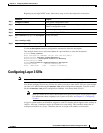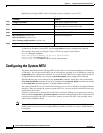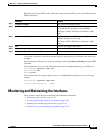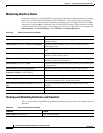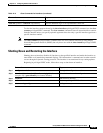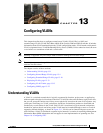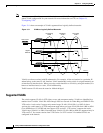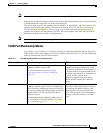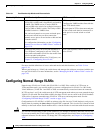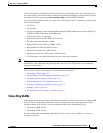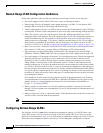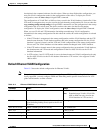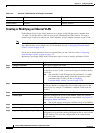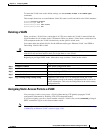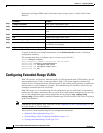
13-3
Catalyst 2960 and 2960-S Switch Software Configuration Guide
OL-8603-09
Chapter 13 Configuring VLANs
Understanding VLANs
Note Up to 64 VLANs are supported when the switch is running the LAN Lite image.
Although the switch stack supports a total of 255 (normal range and extended range) VLANs, the number
of configured features affects the use of the switch hardware.
The switch supports per-VLAN spanning-tree plus (PVST+) or rapid PVST+ with a maximum of 128
spanning-tree instances. One spanning-tree instance is allowed per VLAN. See the “Normal-Range
VLAN Configuration Guidelines” section on page 13-6 for more information about the number of
spanning-tree instances and the number of VLANs. The switch supports only IEEE 802.1Q trunking
methods for sending VLAN traffic over Ethernet ports.
Note Up to 64 spanning-tree instances are supported when the switch is running the LAN Lite image.
VLAN Port Membership Modes
You configure a port to belong to a VLAN by assigning a membership mode that specifies the kind of
traffic the port carries and the number of VLANs to which it can belong. Table 13-1 lists the membership
modes and membership and VTP characteristics.
Table 13-1 Port Membership Modes and Characteristics
Membership Mode VLAN Membership Characteristics VTP Characteristics
Static-access A static-access port can belong to one VLAN and is
manually assigned to that VLAN.
For more information, see the “Assigning
Static-Access Ports to a VLAN” section on
page 13-9.
VTP is not required. If you do not want VTP
to globally propagate information, set the
VTP mode to transparent. To participate in
VTP, there must be at least one trunk port on
the switch stack connected to a trunk port of
a second switch or switch stack.
Stacking is supported only on Catalyst
2960-S switches running the LAN base
image.
Trunk (IEEE 802.1Q) A trunk port is a member of all VLANs by default,
including extended-range VLANs, but membership
can be limited by configuring the allowed-VLAN list.
You can also modify the pruning-eligible list to block
flooded traffic to VLANs on trunk ports that are
included in the list.
For information about configuring trunk ports, see
the “Configuring an Ethernet Interface as a Trunk
Port” section on page 13-15.
VTP is recommended but not required. VTP
maintains VLAN configuration consistency
by managing the addition, deletion, and
renaming of VLANs on a network-wide
basis. VTP exchanges VLAN configuration
messages with other switches over trunk
links.



